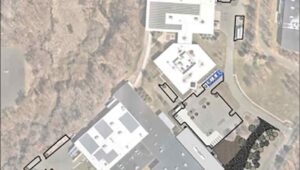Grimsby Ice Factory – Part 3
23rd March 2014
In Part 2 of this series on the Grimsby Ice Factory we looked at the 1930s J&E Hall refrigeration installation which replaced the original steam-driven compressors. In this article we look at that original equipment and how it worked within the Ice Factory.
It is not known what happened to this machinery but, unlike the 1931 equipment, it seems highly unlikely that any of it still exists.
Once it was the largest factory of its kind in the world, supplying ice to one of the busiest fishing fleets in the largest fishing port in the world. Now boarded up and derelict for nearly 25 years, the preservation of the Grimsby Ice Factory is the subject of a campaign by a determined group of locals, keen to save it and transform it into a major regional arts and leisure facility.
Inside are a number of unique items of refrigeration equipment including four huge J&E Hall compressors installed as part of a major refit in 1931.
We know that the Grimsby Ice Factory commenced operations on Monday May 6, 1901 as a joint venture between the Great Grimsby Ice Company and the Grimsby Co-Operative Ice Company. The building and its machinery are reported to have cost £100,000.
Early mentions of the proposed new factory appear in the Hull Daily Mail of March 21, 1899, which mentioned “Building now in progress of a new artificial factory close by the crossing of the old Cleethorpes line in the Fish Dock Road.”
But it was not until five months later that an advert appeared in the same paper seeking “contractors to tender for the erection of a factory and premises on the Fish Docks.” Three guineas was required as a deposit against delivery of the tender. Applications were to be sent to company secretary W Readman.
We don’t know who fulfilled this contract or whether a consultant was involved. We do know, however, that London-based WF Cott was a refrigeration consultant specialising in ice production projects at this time and he was involved in the major extension to the factory in 1907.
The initial refrigeration was provided by four steam-driven Pontifex horizontal double-acting ammonia compressors supplying refrigeration to four ice tanks. This system was capable of producing 300 tons of ice per day but when it opened it was initially trialled with just one of the four compressors operating and producing around about 100 tons.
On August 29, 1904, the Hull Daily Mail reports a visit by Lord Onslow. Describing the “huge” building, the paper reported: “It was an impressive sight and the machinery afforded the visitors special delight. The works are a model of cleanliness and adaptability and the making of the huge blocks of artificial ice interested those who saw it.”
1907 extension
More is known of the factory extension and extra equipment added in 1907 to keep pace with increasing demand. As mentioned above, this extension was masterminded by consulting engineer WF Cott. He operated from offices rather precisely located at 79½ Gracechurch St, London EC.
The 1907 additions included two Linde double-acting ammonia compressors and the addition of a further two ice tanks. This increased output to 500 tons per day.
We rely very heavily for information on the 1907 extension on a report in The Engineer magazine of February 1910 and kindly provided by Grace’s Guides.
Headlined “A Two-Hundred Ton Ice-Making Plant”, this report deals solely with the ice making plant supplied by “The Linde British Refrigeration Company Limited”. Scant reference is made to the original Pontifex equipment but this continued to operate in a separate engine room.
Linde is said to have been responsible for supplying and installing the whole of the machinery, ice-making tanks and ice-crushing and handling plant. This included two steam-driven Linde double-acting ammonia compressors. two belt-driven treble-ram water pumps, two ammonia condensers, two can ice-making tanks and brine refrigerators, centrifugal brine circulating pumps, electrically driven cranes, ice crushers and elevator.

Light for the factory was supplied from a dynamo off the main engine. According to The Engineer, the ice-handling plant used electricity from “another supply”. Presumably this other supply came from a dynamo on the steam engines driving the Pontifex compressors.
The extension also included an insulated 13,000ft³ cold store and an ice store capable of storing 1,100 tons of ice, both being cooled by brine from the upper ice tank and circulated by belt-driven rotary pumps.
The compressors were driven by a steam engine made for Linde by Cole, Marchant and Morley of Bradford. It is described as a vertical cross-compound surface condensing steam engine of the piston drop-valve type.
The steam engine used superheated steam from the Lancashire boilers of the existing plant and is said to have had particularly large bearing surfaces as it was required to run 24 hours a day for six or seven months at a stretch.
The two Linde compressors were direct-coupled and described as being driven from the high and low pressure crank pins on the engine crankshaft, “the engine connecting rods having specially forked lower ends, in between which the compressor connecting rods are placed.”


According to The Engineer the ammonia condensers were of the “open-air type”, one for each compressor. These were placed over a wrought iron tray on the engine room roof and consisted of a series of coils of special lap-welded tube “wound each in one length” and arranged so that all joints were well above the surface of the brine. The brine was circulated by belt-driven centrifugal pumps.
Production of the ice in the ice tanks appears to have been much the same as described in previous articles. The resulting ice was immediately crushed and then conveyed “by elevator and shoots” (sic). The Engineer noted that it was proposed to to install a system of conveyors “at some future date”, equipment that was already in place by the time of the J&E Hall installation in 1931.
The Engineer then describes a series of tests carried out in September 1909 which shows an average output of 208 tons of ice per day.
A steam consumption test taken at the same time gave the following results:
Pressure of steam at engine stop valve 180psi
Revs/min 56.2
Indicated hp of engine 396.6
Steam consumption per indicated horse power hour 9.56lb
Initial temp of ammonia condenser cooling water 59ºF
Ice output/24hrs 208 tons
lbs of ice/lb of steam 5.12
As the steam was supplied from the Worthington boilers which also supplied the Pontifex compressors, The Engineer report pointed out that it was impossible to conduct an independent coal consumption test for the new plant. It did, however, assume an evaporation of 8lb of water per pound of coal, the ice making performance of the Linde equipment worked out at 40.96 tons of ice per ton of coal – ” a very remarkable result,” according to The Engineer and one which it claimed “has never been approached by any other type of refrigerating machinery.”










